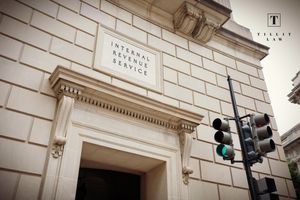Enacted in 1994, the Federal Acquisition Streamlining Act (FASA) contains a “task order bar” that removes from the coverage of the Tucker Act any protests that relate to the issuance of a task or delivery order, the contract value of which does not meet the monetary threshold of $35 million for defense procurements and $10 million for non-defense procurements. Thus, if the contract value of a task or delivery order falls below these thresholds, the Government Accountability Office (GAO) will not entertain protests challenging the award due to lack of jurisdiction. The general rule for determining contract value for the purposes of establishing protest jurisdiction is to calculate the amount of the task or delivery order award. However, the GAO may, under unique circumstances, look beyond the amount of the award to establish the contract value for the purposes of jurisdiction. Such unique or extraordinary circumstances may include situations where the government utilized unconventional methods for compensating the contractor or employed atypical price evaluation techniques. Absent such unique circumstances, however, the GAO will not look beyond the value of the task or delivery order award to establish bid protest jurisdiction.
In B-423672, a bid protest decision issued on August 1, 2025, the GAO dismissed a protest for lack of jurisdiction when the awarded value of the task order at issue was below the $35 million monetary threshold for defense procurements, even though the awardee’s initial proposed price exceeded that threshold. The Army had issued the task order in question under its Responsive Strategic Sourcing for Services (RS3) indefinite-delivery, indefinite quantity (IDIQ) contract to a small business for research and development services in support of its Combat Capabilities Development Command Analysis Center. The RFP contemplated a hybrid task order award that included both firm-fixed-price and cost-no-fee contract line item numbers (CLINs). Only two contractors submitted responsive proposals, and the task order was awarded for roughly $28.5 million. Notably, after completing the proposal evaluations, the Army determined that certain labor categories were no longer required and excluded them from the final award. Additionally, while the award notice stated that the final awarded value of the task order was $28.5 million, the awardee’s proposed cost was approximately $39 million, and thus over the $35 million FASA threshold for defense procurements.
The protester, whose proposed cost was roughly $32 million, argued that the Army’s decision to eliminate certain labor categories from the awarded task order constituted a material change to the agency’s requirements that should have warranted a solicitation amendment. In support, the protester cited FAR 15.206(a) and pointed to the requirement that when an agency’s needs materially change after a solicitation has been issued, the agency must issue a solicitation amendment to notify the offerors and give them an opportunity to respond. The protester argued that but for the Army’s failure to amend the solicitation per FAR 15.206(a) properly, the challenged task order award would have met the $35 million FASA threshold applicable to defense procurements. The protester also noted that the awardee’s proposed price had already surpassed the relevant FASA monetary threshold for establishing protest jurisdiction. The protester took the position that the procuring agency’s failure to amend the solicitation in violation of FAR 15.206(a), in conjunction with the awardee’s proposed price exceeding the amount of the jurisdictional bar, was sufficient to establish protest jurisdiction in this instance. Stated another way, the protester argued that due to the Army’s regulatory violation of FAR 15.206(a), the GAO should look to the awardee’s proposed price of $39 million as the value to determine jurisdiction rather than the actual value of the awarded order ($28.5 million). Meanwhile, the agency argued that the actual value of the awarded task order should resolve the question of jurisdiction, rather than the merits of the protester’s protest grounds.
In dismissing the protest, the GAO agreed with the agency, noting that the awarded value of the task order was the relevant inquiry for establishing protest jurisdiction. The GAO cited its previous decisions where the awarded value of the task order was determinative for the purposes of establishing jurisdiction, rather than the offerors’ proposed price. The protester’s contention regarding the Army’s alleged regulatory violation relating to the non-issuance of a solicitation amendment was rejected because it advanced a circular argument. The GAO ruled that the outcome of the merits of the protest was irrelevant for determining the value of the task order for jurisdictional purposes. In other words, it was impermissible for the protester to attempt to hook the FASA task order monetary threshold to the merits of its protest based on an alleged regulatory violation by the Army. Furthermore, the GAO did not find any unique or extraordinary circumstances in this protest that would require it to look beyond the amount of the task order award to establish the contract value for the purposes of bid protest jurisdiction. Consequently, the protest was dismissed because the contract value of the task order failed to exceed the $35 million FASA threshold for defense procurements.
Under 10 U.S.C. § 3406(f)(1)(B), the GAO possesses jurisdiction to hear a protest challenging the issuance or proposed issuance of a task or delivery order issued by a defense agency if the order is valued in excess of $35 million. Contractors should note that the National Defense Authorization Act (NDAA) for fiscal year 2025 raised this monetary threshold to $35 million for defense procurements from the previous value of $25 million. This increase in the monetary threshold notwithstanding, the general rule for calculating contract value for the purposes of determining jurisdiction remains unchanged. The contract value for protest jurisdiction purposes will generally be determined by the amount of the final contract award, and not the awardee’s proposed price. If the contract value of the order does not exceed the relevant monetary threshold, the protester must establish extraordinary or unique circumstances for the GAO to look beyond the amount of the contract award to establish the contract value of the task or delivery order. However, such circumstances are quite rare, such as when the procuring agency pays the contractor in unconventional ways or utilizes unusual price evaluation techniques. Finally, it is worth noting that contractors can still file protests challenging task or delivery order awards under 10 U.S.C. § 3406(f)(1)(A), if their protests allege that the order increases the scope, period, or maximum value of the IDIQ contract under which the order was issued.
This Bid Protest Insight is provided as a general summary of the applicable law in the practice area and does not constitute legal advice. Contractors wishing to learn more are encouraged to consult the TILLIT LAW PLLC Client Portal or Contact Us to determine how the law would apply in a specific situation.





